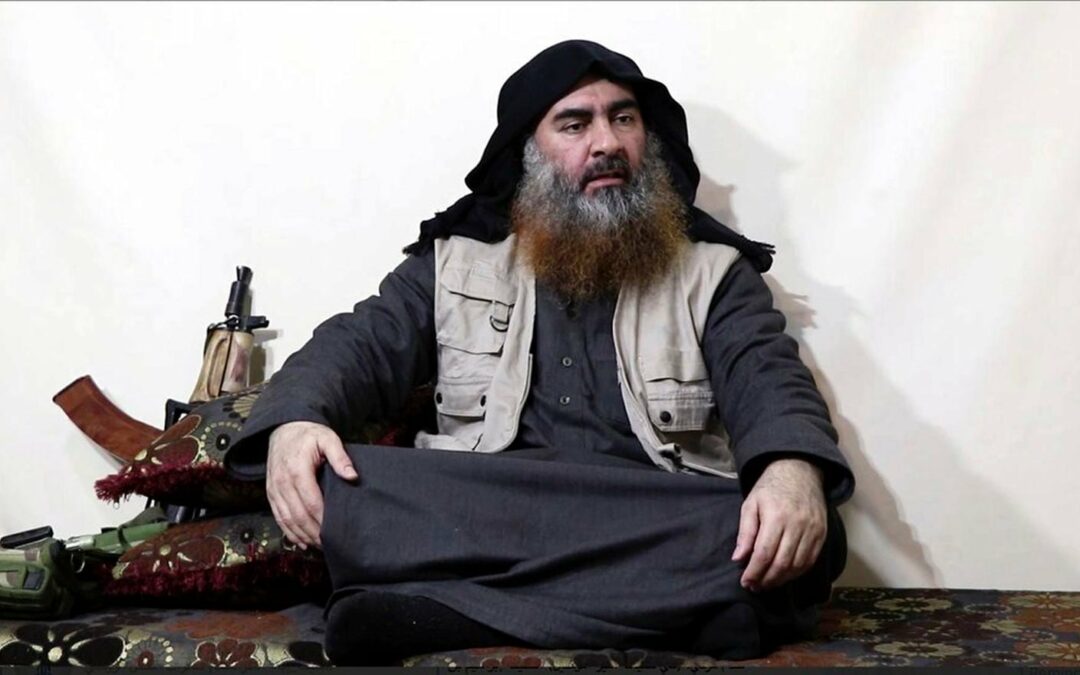United States Special Operations commandos carried out a risky raid in northwestern Syria on Saturday, targeting Abu Bakr al-Baghdadi, the leader of the Islamic State.
Baghdadi died when he reportedly exploded his suicide vest.
Officials said the raid was in Idlib Province, hundreds of miles from the area along the Syrian-Iraqi border where Baghdadi was long believed to be hiding.
Idlib is dominated by jihadist rebel groups hostile to him.
Commandos from the Army’s elite Delta Force carried out the mission with the C.I.A. providing intelligence and reconnaissance information on the ground.
Maj. Gen. John W. Brennan Jr., as deputy commander of the military’s secretive Joint Special Operations Command, oversaw the mission, which had been staged for a week before taking place on Saturday, an American official said.
The raid, which was first reported by Newsweek, came as the United States continued to withdraw hundreds of troops from northern Syria who had been conducting counterterrorism missions, while sending in several hundred other forces to guard eastern oil fields in Syria against the Islamic State.
President Trump teased the news last night with a tweet devoid of context shortly before 9:30 p.m.
“Something very big has just happened!” Trump wrote.
He planned to address the nation Sunday morning from the White House.
It is expected Trump will praise the role of intelligence agencies that were responsible for organizing the mission, even though he has often ridiculed those very agencies, calling them part of the “deep state.”
An American official said on Saturday night that senior military officials had decided that, with American forces largely withdrawing from Syria, commandos should take action quickly to try to kill or capture senior terrorists in northwest Syria before the United States lost that ability.
Baghdadi, the cunning and enigmatic black-clad leader of the Islamic State, transformed a flagging insurgency into a global terrorist network that drew tens of thousands of recruits from 100 countries.
He has been the target of a yearslong, international manhunt that consumed the intelligence services of at least four different countries, and is believed to hew to extreme security measures, even when meeting with his most-trusted associates.
He has been incorrectly reported killed or wounded multiple times.
Much of the world first learned of Baghdadi in 2014, when his men overran one-third of Iraq and half of neighboring Syria and declared the territory a caliphate, claiming to revive the Muslim theocracy that ended with the fall of the Ottoman Empire.
At its peak, the group’s black flag flew over major population centers, including the Iraqi city of Mosul, with a population of 1.4 million.
In these territories, the group known variously as ISIS, ISIL and Daesh imposed its violent interpretation of Islam.
Security officials say that Baghdadi was arrested near the Iraqi city of Falluja at the home of his in-laws in January 2004.
The target of the raid was his brother-in-law, who had taken up arms against the American occupation.
Baghdadi was swept up in the raid, considered little more than a hanger-on at that point, officials said.
He spent 11 months in a detention center at Camp Bucca.
Some analysts have argued that it was Baghdadi’s time in American custody that radicalized him.
But those who were imprisoned alongside him say he was already committed to violence when he entered the sprawling prison camp.
Pentagon records indicate that Baghdadi was released in late 2004, during the Bush administration, a failure of intelligence that would come to haunt American officials.
For years, he disappeared from view.
Then in 2009, security forces recovered a cache of documents in a safe house used by the militants and found the name “Abu Dua” on the group’s personnel list, the nom de guerre Baghdadi was using at the time.
In May 2010, the insurgents announced their new leader: It was Abu Dua, who now introduced himself to the world as “Abu Bakr al-Baghdadi.”
There were numerous near-misses in attempts to arrest him.
But with each close call, Baghdadi became more circumspect, more obsessed with security and more untrusting.
He is believed to have stopped using cellphones over a decade ago, relying exclusively on hand-delivered messages.
In 2014, when he ascended the marbled pulpit of a mosque in Mosul to declare the caliphate, it was the first time a video appeared that showed his face uncovered.
Baghdadi’s reclusiveness fed rumors of his demise, with many news media outlets carrying speculative reports of his death, all of which proved to be untrue.
Each time, he resurfaced in audio recordings, thumbing his nose at the world.
